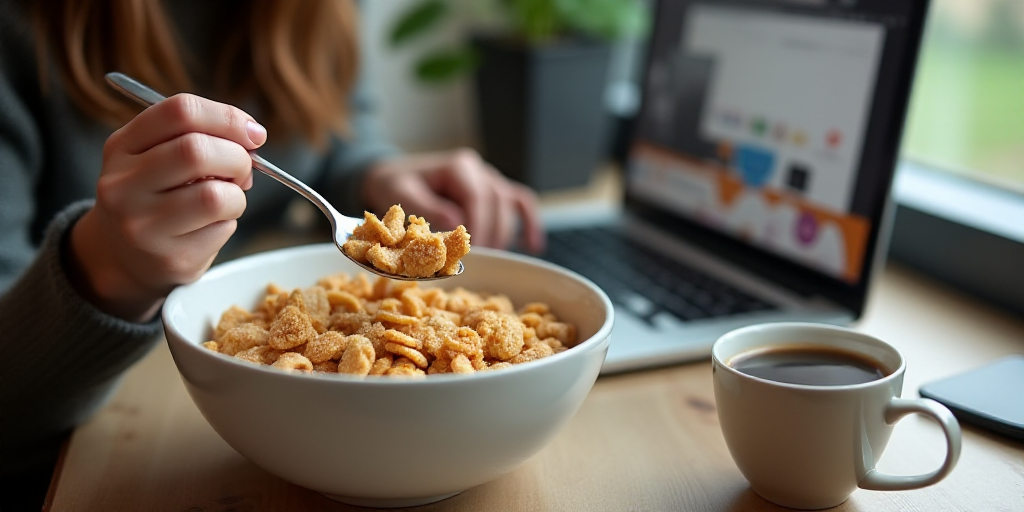In today’s fast-paced world, time has become one of our most precious commodities. The hectic pace of life often requires meticulous organization, both in the workplace and at home. This organization extends to our eating habits, from making grocery lists to planning meals for the week, a practice known as batch cooking.
However, there are situations where food consumption occurs in an unorganized manner, a behavior traditionally referred to as “snacking.” This practice involves eating outside of the main meals, driven by hunger, habit, or mere craving.
The Health Implications of Snacking
Historically, we’ve accepted that consuming three to five meals a day is linked to a healthier diet, especially during growth phases and in healthy adults. This distribution involves three main meals a day and two smaller optional ones, which could include snacking.
However, some studies argue for the consumption of only the three main meals for greater benefits. Authors of a 2017 study published in The Journal of Nutrition claimed that frequent snacking outside of main meals increases the risk of a higher Body Mass Index (BMI) and overweight.
Other authors suggest that having three meals a day instead of four increases HDL (good) cholesterol, while others argue that fewer but larger meals increase thermogenesis, the energy the body spends on digestion and nutrient metabolism.
Risk of Insulin Resistance
Beyond its impact on BMI, cholesterol levels, and thermogenesis, research has also explored how snacking might influence insulin secretion and glucose control. However, there’s no clear consensus on a generalized effect.
Some authors suggest that fewer meals or skipping main meals might increase the risk of insulin resistance. Conversely, others argue that two meals a day are more effective for insulin sensitivity and glucose control than frequent snacking allowing up to six meals a day.
These conflicting results mean we can’t definitively conclude about snacking’s impact on glucose control. Instead, we should focus on the composition of the snacks rather than the act of snacking itself.
Snacking for Appetite Control
Could snacking have benefits in specific situations like weight loss?
When trying to lose weight, one dietary goal is to create a caloric deficit. Intuitively, snacking might seem to complicate reducing energy intake. However, meal frequency could be a useful tool for controlling appetite and diet adherence.
Ghrelin, or the “hunger hormone,” influences appetite, encouraging food intake. A higher number of daily meals might reduce ghrelin peaks, improving appetite and preventing excessive hunger before the next meal.
However, in practice, snacking’s effect on hunger can’t be reduced to this physiological factor alone. For instance, consuming six small snacks daily resulted in a greater feeling of hunger than eating three larger meals among American volunteers. Similar results were found in studies focusing on eating only breakfast and lunch.
A large cohort study observed that adults who ate less frequently (only two meals a day) and avoided snacking tended to gain less weight over the years compared to those who ate more often.
Thus, snacking might lead to less satiety, counteracting appetite control and complicating weight loss. Should we prohibit snacking in these cases? No. Instead, pay attention to the snack’s composition; consuming protein-rich, fiber-filled, or whole grain snacks like nuts, yogurt, or fruit can increase satiety and aid in appetite control.
This could reduce overeating during main meals and contribute to weight management in individuals with overweight or obesity. However, frequently consuming high-energy snacks can promote weight gain.
Individual appetite perception should also be considered. For some, avoiding prolonged fasts prevents severe hunger dips. Others might find less frequent, structured meals more satisfying.
For those aiming to lose weight, it’s generally advised to limit non-essential snacking and prioritize filling foods. Continuous snacking might make quantifying the caloric deficit challenging, making it easy to overshoot weight loss goals.
Regardless, understanding both physical and emotional hunger is crucial, and personalized meal planning by a nutrition professional is recommended.
The Role of Exercise
The aforementioned analysis pertains to individuals who, despite leading active lives, don’t incorporate regular exercise into their routines. However, if we focus on those who engage in moderate physical activity (e.g., gym workouts a few times a week, short-distance running, recreational cycling), diet plays a role in supporting performance and recovery, even if they’re not elite athletes.
In fact, some studies suggest that in physically active individuals, a higher frequency of meals may help optimize certain aspects. Specifically, maintaining consistent total caloric intake but distributing it across more meals can enhance athletic performance, improve body composition (more lean mass, less fat), and support post-exercise recovery.
Organizations like the International Society of Sports Nutrition recommend that athletes in weight-loss regimens consume frequent small protein meals to mitigate muscle loss.
When is Snacking Healthy or Harmful?
Snacking between meals doesn’t speed up metabolism or guarantee weight loss or gain on its own, but it can influence insulin levels, appetite control, and overall diet quality.
Whether snacking is beneficial or harmful depends on frequency (moderate vs. continuous), portion size (small portions vs. binge eating), snack quality (nutritious vs. empty calories), and individual needs.
Using snacking to our advantage means knowing when to indulge and when to abstain, always listening to our body’s signals and using common sense.






